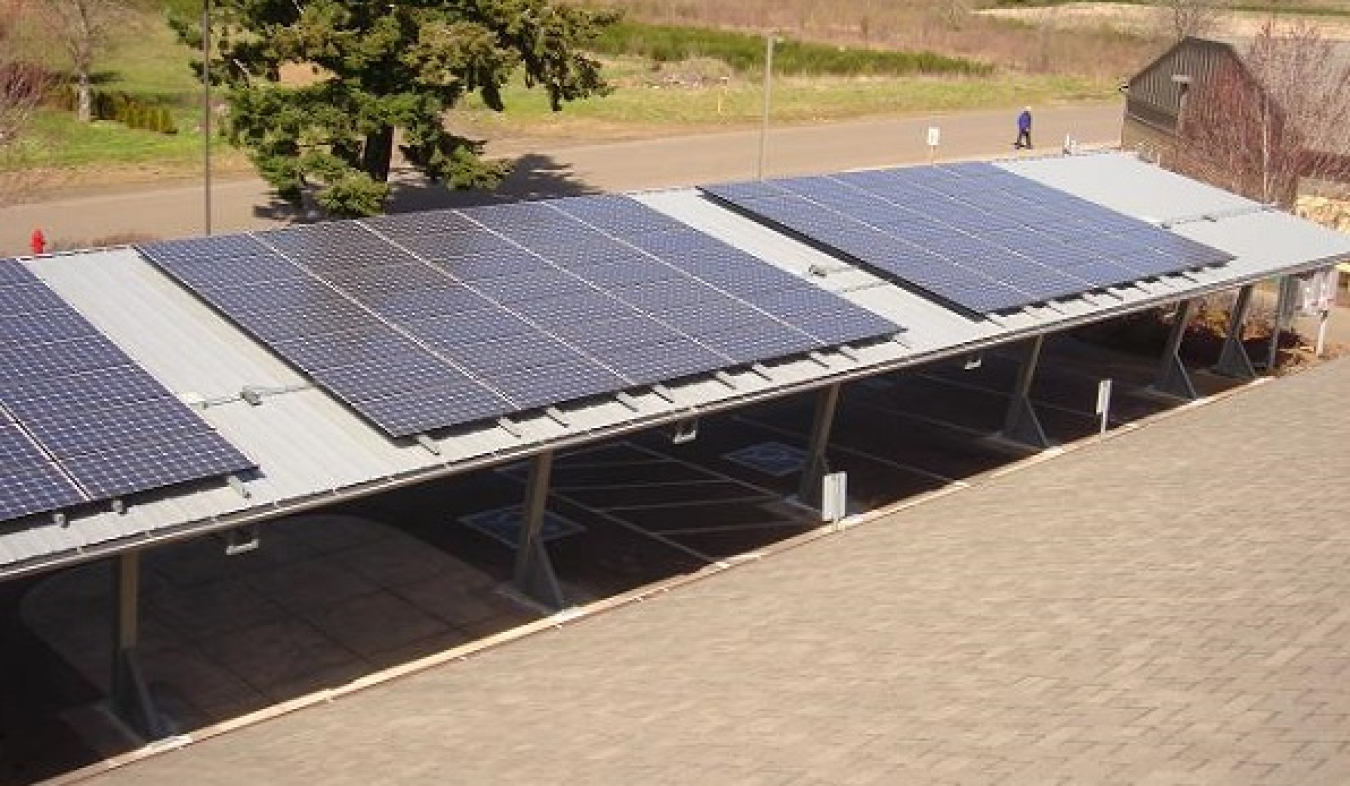The tribal government is challenged to find innovative ways to both improve social and economic stability and promote a sustainable environment.
Office of Indian Energy Policy and Programs
October 20, 2014
PV panels installed on Grand Ronde Tribal Housing Authority carport. Photo from GRTHA, NREL 31797
Challenge: Situated on nearly 12,000 acres in the heart of Western Oregon’s scenic coastal range, the Confederated Tribes of the Grand Ronde Community of Oregon has a strong connection to the earth and nature and a deep commitment to environmental stewardship. Landless from 1954 until 1983 when the Grand Ronde Restoration Act returned a portion of its land base, the Tribe has faced an uphill climb building out the infrastructure and services required to support and sustain its community of approximately 5,000 members.
The tribal government, which relies primarily on revenues from the Spirit Mountain Casino to operate, is challenged to find innovative ways to both improve social and economic stability and promote a healthy, sustainable environment for future generations. In 2009 the Grand Ronde Tribal Housing Authority (GRTHA) began pursuing opportunities to develop renewable energy projects and implement energy efficiency measures.
Even though electricity in the Northwest is priced fairly reasonably relative to other parts of the country, and renewable energy is preferred by the Tribe, there was skepticism about the payback period and return on investment for renewable energy projects. As part of a long-term energy strategy, the Tribe sought to gain experience and knowledge in solar energy development.
Solution: In an effort to address concerns about renewable energy project costs and make the best use of funding available at the time, the GRTHA invested just under $200,000 in a 42-kilowatt (kW) facility-scale solar system in April 2010. By tapping Oregon’s Energy Trust, which provides technical assistance and cash incentives to promote energy-saving upgrades, the Authority reduced its up-front capital investment in the $283,000 system by 30%.
A total of 203 photovoltaic (PV) arrays were installed on two newly constructed parking lot carport structures. The solar system generates 60% of the electrical needs of the GRTHA office and maintenance shop, and continues to pay for itself through avoided energy costs, positioning the agency to achieve its projected 33-year payback on its investment.
Buoyed by the success of its initial foray into renewable energy and incentivized by Oregon’s net-metering program, the GRTHA installed 368 solar panels at a low-income housing complex for tribal elders, completed in fall of 2013.
During the summer months, PV arrays on southfacing units and carport structures generate 100% of the electricity for the development’s 23 apartments, which also benefit from energysaving design features like high-efficiency heat pumps for heating and cooling and solar tubes for enhanced daylighting.
"Residents living in the housing units that were constructed previously without solar now want solar on their units. They are envious of the lower electrical bills," said Don Coon, GRTHA Housing Improvement Coordinator.
Solar PV Benefits:
- Reduced electricity costs by generating 60% of the energy needs of the GRTHA's office and maintenance shop
- Lowered electricity bills for 23 low-income Tribal Elder Housing units, which use solar power to generate anywhere from 36% to 83% of their electricity annually
- Offset 25,231 pounds of carbon dioxide emissions—the equivalent amount of carbon dioxide absorbed by 299 trees—in August 2014 alone, and provided 100% of the electricity used by the elder housing complex in the summer months
- Displaced fossil fuel use with clean, renewable energy, minimizing environmental impact and advancing tribal goals of environmental sustainability, economic stability, and self-determination.
For more news on actions to accelerate energy development and address climate change in Indian Country, read the full Spring/Summer 2014 issue of the DOE Office of Indian Energy newsletter, Indian Energy Beat.

